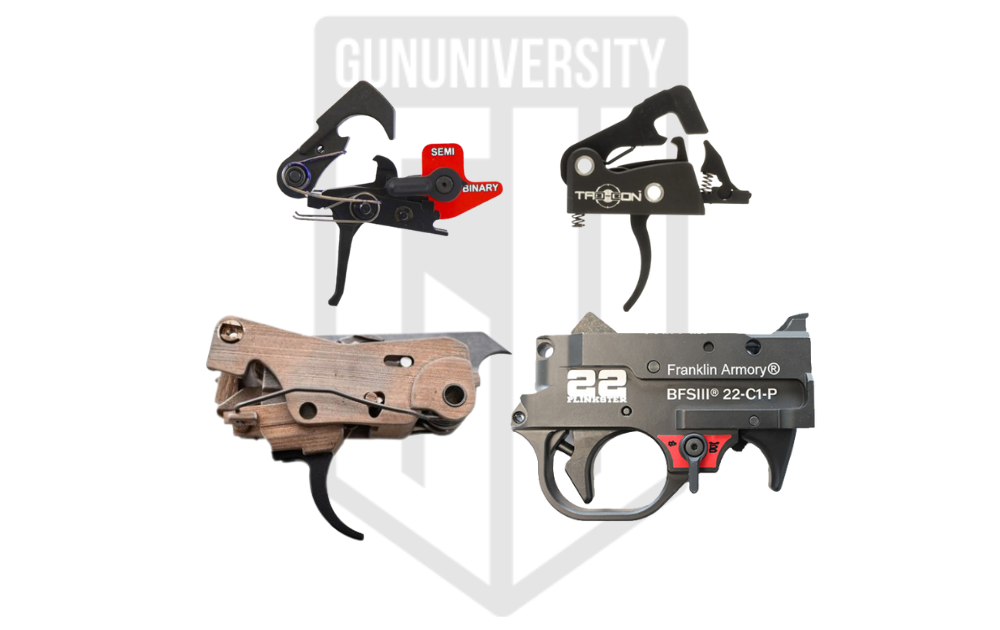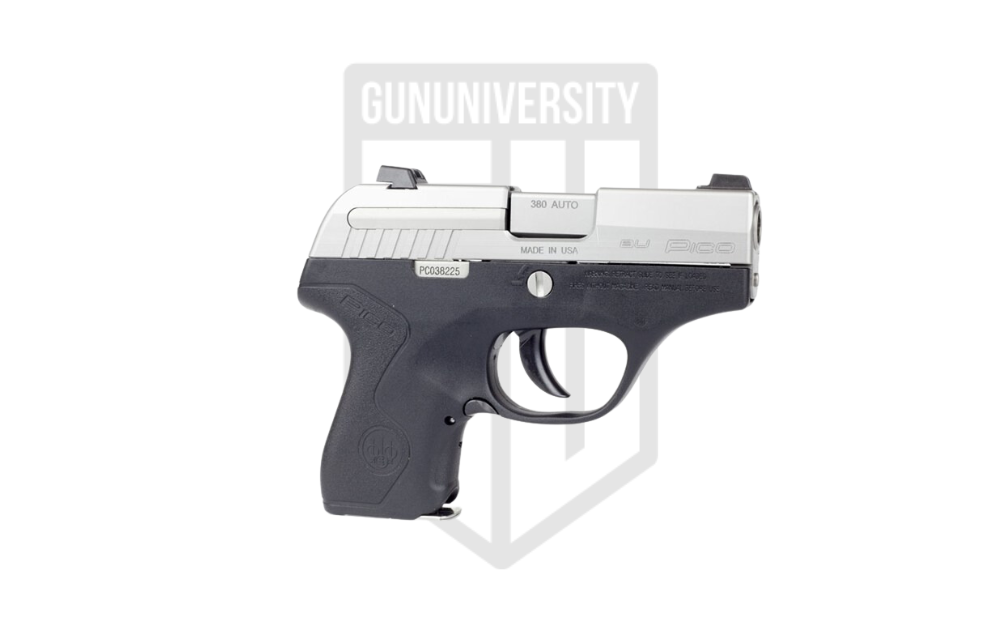Target Training: What are the Best Types of Targets for Shooting?
We talk lots about the things that shoot bullets, we talk about the bullets, but we rarely talk about the things we shoot bullets at. I’m talking about targets, and today we will look at steel, polymer, and paper targets and how they affect your ability to train.
Each target type offers unique training potential, as well as limits and downsides. We’ll explore all of that today and deliver unto you the pros and cons of different target types and several examples in each genre.
Shooting Target Types
If you’re particularly interested in any one particular type of shooting target, click on the applicable link below, and you’ll hop straight to it. Or just keep reading to find out our opinion on all. ????
Under each section, you’ll find what we think about each style of target and recommendations for those looking to your own set.
Paper and Cardboard Targets
Paper and cardboard targets are the most common target on the market. These targets range from the classic B-27 silhouette to targets you can print at home on an 8.5 x 11-inch printer paper.
Cardboard targets fall into the same classification in the fact that they are soft, lightweight, affordable, and reusing them is possible, but they degrade quickly.
Unlike most reusable targets, paper and cardboard targets allow you to score for accuracy and precision. Observing shot placement is a significant advantage of paper targets. This ability to observe enables you to diagnose accuracy issues.
If you are shooting low and to the left, you can see you have a flinching problem and fix it.
In that same vein, when it comes to zeroing a weapon, paper targets are a must-have. If your optic has you consistently hitting high and right, you can observe that and dial that correction into your optic.
No other target option allows you to verify your hits consistently.
From a tactical training perspective, paper and cardboard targets are incredibly safe and can be used at any range. But the real value comes from close range training.
You can get up close and personal with a cardboard and paper targets and have no fear of ricochets and bullet splatter. To get the most out of your practical training, you have to use paper targets.
Paper targets can also come in various shapes and sizes with a variety of patterns placed onto the paper and cardboard designs. Drill based training targets can incorporate variously sized and shape options to allow you to complete specific drills.
For example, the Dot Torture target utilizes ten 2-inch dots incorporating various exercises on a single target.
They don’t deliver the instant satisfaction of a steel target, and they have to be replaced and repaired, but they give you a measurable metric for your accuracy.
Paper targets are a hassle when shooting at anything beyond the pistol range. At 50 yards and beyond, it can be difficult to see where you are hitting without trotting downrange or using a spotting scope.
While necessary for zeroing, it is less efficient for moderate and long-range training. Paper targets may not always be optimal but can be effectively used for both rifle and shotgun training.
Paper and Cardboard Targets Pros and Cons
- Lightweight and Easy to Transport
- Affordable
- Perfect for Weapon Zeroing
- Wide Variety of Options
- Can Be Used at Any Range
- Disposable
- Provides Only Visual Feedback
Our Favorite Picks for Paper and Cardboard Targets
1. Viking Tactical Double Sided Advanced Training Target

If you’ve ever heard of Viking Tactical, then you know that they don’t cut corners when it comes to quality. And they make no exception when it comes to their paper targets.
These targets are a two-for-one special with different printouts on each side of the paper so you have the option of what you’d like to actually shoot at and saving you money from having to buy multiple targets. One one side, you have a silhouette with visible skeleton. And on the other, there’s 4 SR-1C bullseyes with 1″ square sighting grid.
2. Sajnog 25 Yard Zeroing Target
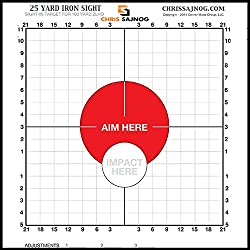
Chris Sajnog is a former Navy SEAL who currently leads a life of helping people shoot. He has some excellent training techniques and tools, and one such tool is his zeroing target. This paper target is designed to allow shooters to zero their rifle for 100 yards at a 25-yard range.
The target compensates for height over bore issues and is built with the 5.56 AR-15 in mind. If your range is limited, but you want a solid zero, this target will get you there. The targets come in two varieties, one for iron sights and one for red dots.
3. B27-IMZ
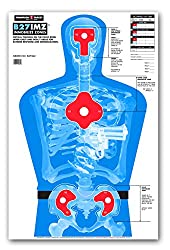
B27 targets are pretty legendary, but also kind of suck. They put the ten ring on a target’s stomach, which isn’t the best place for accurate defensive firearms training. The B27 IMZ targets give you an X-Ray view of your target and show you three distinct targeting zones relating to the head, chest, and pelvic regions.
It serves the same purpose as the B27 while increasing the effectiveness of your training. These realistic paper targets are a reliable training tool for both rifle and pistol marksmanship.
4. EZ2C Dot Torture Targets
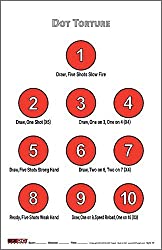
I mentioned Dot Torture targets before, and I want to add them here because they are the perfect example of why paper targets rock. These simple targets present you with ten 2 inch dots and a 50 round shooting workout to test all your skills.
Dot Torture is one of my favorite drills, and as far as low round count training goes, Dot Torture is one of the best 50 round drills you can do.
Polymer Targets
Polymer targets come in a few different varieties. Some act as backers for paper targets and provide shooters with a reusable target stand the approximate shape and size of your target. Other polymer targets are simply targets and come in all shapes and sizes for various purposes.
Polymer targets are a bit of a compromise between paper and steel targets. They are reusable like steel and can be more affordable, easier to transport, and available in a wider variety of shapes than steel.
They aren’t as tough as steel targets but tend to last for a very long time. Modern self-healing targets last almost forever with pistol and small-bore rifle rounds. Polymer targets are also safer for closer range shooting, and newer, higher-end systems include dueling trees and other reactive targets.
Price-wise, polymer targets are all over the place. Cheap plinking targets are very affordable, and while fun, they are not highly practical. Polymer targets offer a massive selection from simple spinners, poppers, and silhouettes to ground-based targets that jump and run with every shot fired.
While polymer targets can be very high quality, durable, reactive, and even fun to shoot, many are not designed for serious training purposes. Most are intended for plinking.
Higher-end systems, including dueling trees, reactive silhouette targets, and targets that replicate the human body, very accurately cost as much or even more than steel targets. These serious polymer targets are the perfect choice for intense close-range training, especially when it handgun oriented.
If your primary goal is training with a pistol, then a polymer target is likely the best choice for you.
The best thing about polymer targets is that many present a 3D shape that allows for training at various angles. This is well beyond what steel offers.
While they are safer for close-range training, many are not shotgun or rifle rated. Polymer targets do not deliver the steel ding that longer-range shooters enjoy. They also don’t offer a means to measure group size or zeroing capability.
Polymer Targets Pros and Cons
- Reusable and Durable
- Some Offer a 3D Perspective
- Lightweight and Easy to Use
- Can Be Used at Any Range
- Massive Size Selection
- Provides Only Visual Feedback
- Reactive Targets are Expensive
Our Favorite Picks for Polymer Targets
1. USMC Plastic Backer and Paper E Target
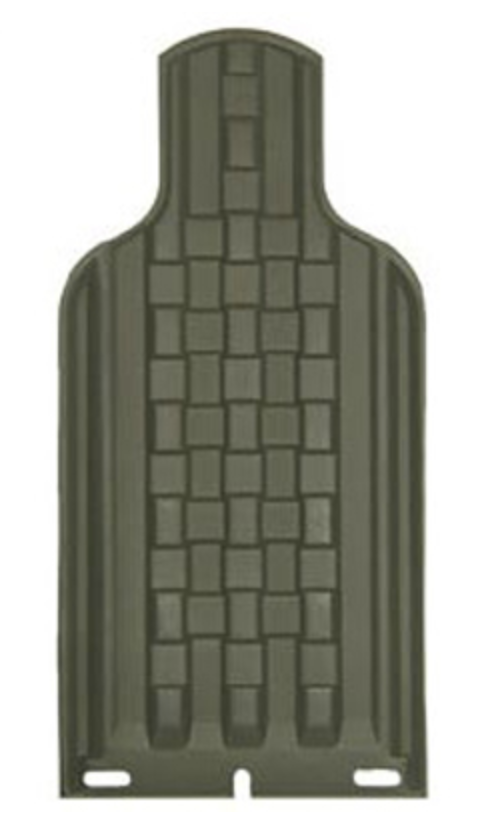
Call it the Jarhead in me, but I love the USMC’s plastic target backer and paper E target combination. The plastic target is rigid and capable of eating thousands of rounds before faltering. The paper target is thick and strong and well suited for long and intensive training sessions.
The plastic target is a weatherproof backer, and the paper target offers shot zones in the head, chest, and pelvis region. This simple set-up is an excellent and proven training tool. A variety of targets can also fit the backer, including the USMC pistol qual targets.
2. Rubber Dummies
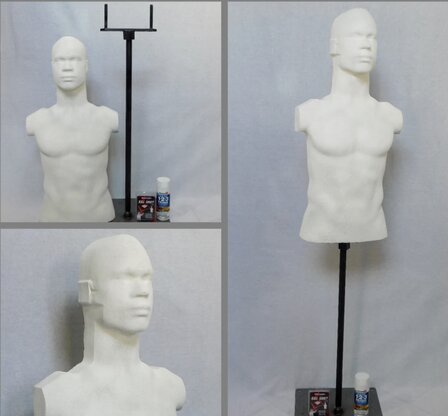
Rubber Dummies are self-healing 3D silhouette targets that are massive and well made. They deliver something steel and paper target can’t, and that’s shooting a target from nearly any angle. This means side shots, as well and different diagonal angles. The 3D design gives your training both a figurative and literal new angle.
These dummies aren’t cheap, but they are very well made and will withstand thousands of rounds. For shot placement purposes, a can of white spray paint does wonders and allows you to track your shots during training sessions.
2. Birchwood Casey 3D Targets

Similar to the rubber dummy, this molded polymer target is much smaller, lighter, and cheaper. It’s a simple shell of a target that is semi-healing. It presents the shooter both the head and chest of a target and can be used for shooting at various angles.
It won’t absorb as many rounds as a rubber dummy, but the cost makes it a very tempting way to train with a semi-3D target.
Steel Targets
Steel targets have become mighty popular and for a good reason. They are incredibly durable and can soak up thousands and thousands of rounds. Steel targets come in various configurations, and they can be teeny tiny gongs to man-sized silhouette targets. Reactive steel targets are quite common and can swing, drop, and even spin when shot.
These reactive targets allow you to learn to track targets and rapidly transition between targets. At the same time, you’re having fun, and fun reinforces the time spent training.
Steel targets also deliver a nice loud ding whenever they are hit. When training new shooters, steel targets can often be an excellent choice. The ding provides instant feedback and lets shooters know they hit the target without them getting obsessed with hitting the bull’s eye or creating small group sizes.
Zeroing a rifle or red dot equipped handgun with a steel target is a challenge and generally not advised. However, with a zeroed weapon, a steel target allows a shooter to confirm their hits instantly out to several hundred yards. You can engage multiple targets rapidly with instant feedback. Should you miss, you can correct yourself, and this adds on a level of realism because, in real life, you miss, and learning to recover from a miss is invaluable.
Steel targets also make training with shotguns much more palpable. Shotguns are very destructive weapons and tear targets to pieces. Steel targets make training with shotguns possible and efficient.
Steel targets come in various configurations and different degrees of thickness. Some are rated only for handguns, and some are rated for rifles and handguns, so pay attention when choosing a target.
Only using steel targets will only take a shooter so far and can create a false sense of skill. Without a means to measure precision, your ability to consistently shoot tight groups and place shots right where you want them will never be sharpened. You can’t train for extreme close quarters with steel either. Bullets can ricochet or explode and splatter.
Steel targets also require a degree of common sense. It would be best if you orientated them at a downward angle to allow splatter and ricochets to hit the ground instead of flying wildly. Steel targets are also somewhat expensive and often quite heavy. Moving them around is a great workout.
Steel Targets Pros and Cons
- Deliver Instant Feedback with Every Shot
- Will Last Forever
- Perfect for Long Range Shooters
- Can Take Heavy Shotgun Training
- Expensive
- Very Heavy
- Cannot Be Used at Close Ranges
Our Favorite Picks for Steel Targets
1. HighWild Complete Rifle Gong
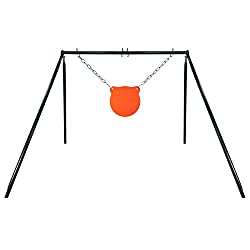
I’m a simple man, and I like package deals. To hell with buying individual components. I like my targets to come ready, and the HighWild rifle gong is a ten-inch gong, stand, and chain set that’s ready to hit the range. It costs less than 100 bucks too.
Rifle gongs are a lot of fun for various target types, and they present a small target for moderate to long-range shooters. These gongs still deliver that instant feedback and lovely ding we all love. Their small size and swinging design make them quite safe and easy to set up and manipulate.
2. Birchwood Casey Dueling Tree

Dueling trees are a lot of fun. A dueling tree is a stack of steel circle targets that, when hit, spin around from one side to the other. Racing down or up the tree, or blowing one target from side to side is a ton of fun and trains your ability to track your sights and react to a small moving target.
The Birchwood Casey Model is cheap and simple, with six spinning targets each six inches in diameter. It’s an awesome addition to a home range, and if you’ve never tried one, I highly suggest it.
3. Champion IPSC AR 500 Target
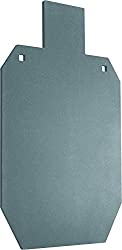
This big steel torso target is cut to IPSC standards and will deliver you training opportunities for rifles, shotguns, and pistols. This big fella is no joke, and if you purchased one steel target, and this should be your choice.
The size and design allow for plenty of realistic training opportunities and present you with a steel target that will last a lifetime. I love these for shotgun training because I can hit them with dozens of rounds of buckshot, neigh hundreds of rounds, and they still keep on keeping on.
Which to Choose?
Personally, there is no right answer. If I had to pick one, it would probably be paper. While not perfect, paper and cardboard targets can do anything. However, optimistically the best thing to do is mix it up.
There is no reason to choose one over the other. They each have strengths and weaknesses, and when combined, you are creating an environment in which you can get the most out of your training. Think of it like your diet; too much of one thing is never good. Diversify your target portfolio, and you’ll get the most out of your training.
Recent Posts
July 26, 2024
July 26, 2024
July 25, 2024

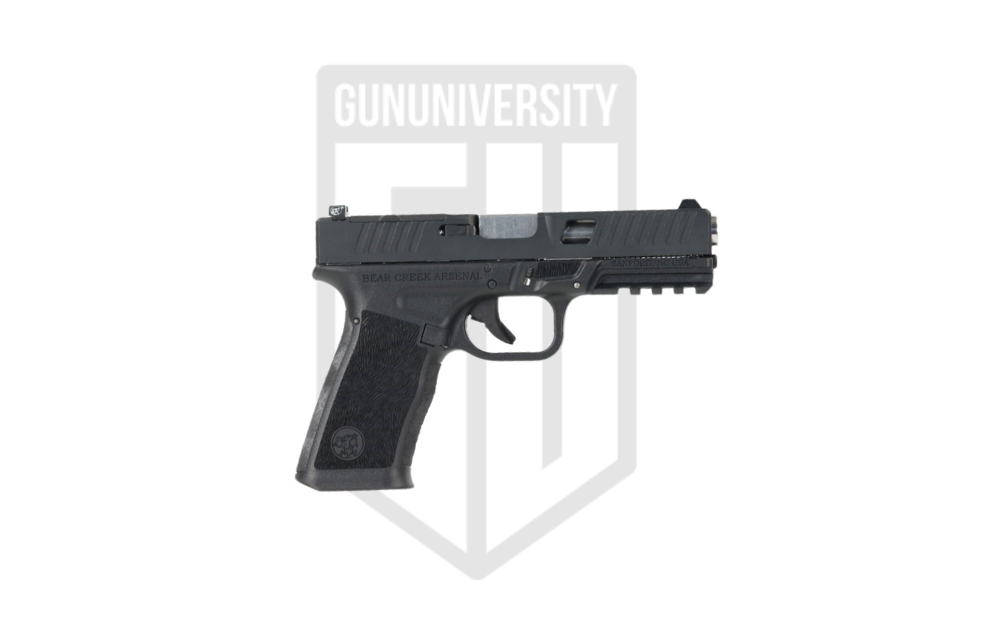
![The Best Shooting Hearing Protection in 2024 [Tested]](https://gununiversity.com/wp-content/uploads/2021/09/best-shooting-hearing-protection.jpg)
